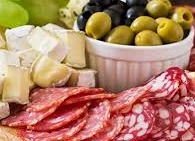 Analysts of the KPMG consulting company, at the request of RBC, estimated the current results of the food embargo, which is five years old this August. One of the results of the food embargo was a rise in prices for consumers, and not only for products that were banned, analysts of KPMG concluded. At the same time, the Ministry of Agriculture as a whole estimates the results of five-year counter-sanctions as positive.
Analysts of the KPMG consulting company, at the request of RBC, estimated the current results of the food embargo, which is five years old this August. One of the results of the food embargo was a rise in prices for consumers, and not only for products that were banned, analysts of KPMG concluded. At the same time, the Ministry of Agriculture as a whole estimates the results of five-year counter-sanctions as positive.
Now, KPMG cites data from Rosstat and the Ministry of Agriculture, Russia produces 99% of the grain it needs, 93% of meat and meat products, and 95% sugar. According to these indicators, the goals are met (the planned indicators of the doctrine are 95, 85 and 90%, respectively). For milk, salt, vegetables and fruits, indicators have not yet been achieved, although their availability has increased over five years. The situation with regard to potatoes is the opposite: in 2013, Russia was provided with its own potatoes by 97%, and in 2017–2018 this figure fell to 94%. The doctrine stated in the doctrine is 95%. The introduction of the embargo coincided with the devaluation of the ruble, KPMG notes. Due to this, Russian products, which previously could not always compete with imported ones in price and quality, turned out to be protected from imports by an economic barrier. Russian products in many categories have become more affordable and have occupied their niche in the market.
Another indicator of food security is the availability of food to the population, and here the situation has worsened over five years, KPMG states. The consumer may have paid the highest price for providing import substitution, as prices rose not only for products prohibited for import, but also for products made in Russia, Vitaly Sheremet, the head of the agro-industry center of KPMG (Russian Branch) said. The highest dynamics of price increase in retail over five years since 2013 has been observed in such segments as butter (+ 79%), frozen fish (+ 68%) and white cabbage (+ 62%). At the same time, the price of products, which until 2014 produced a lot in Russia, also increased: wheat flour went up by 25%, pasta - by 34%, sunflower oil - by 35%. The only significant product, the prices for which have not changed for five years, is potatoes.
Russian producers are still largely dependent on foreign suppliers, KPMG explains the increase in consumer prices for products. This applies both to capital costs (purchase of equipment) and operating (purchase of feed and planting material). In addition, in the cost structure of agricultural producers contains commodities, the share of imported goods or commodities in the cost structure can exceed 50%, KPMG notes.
Source: soyanews.info.

